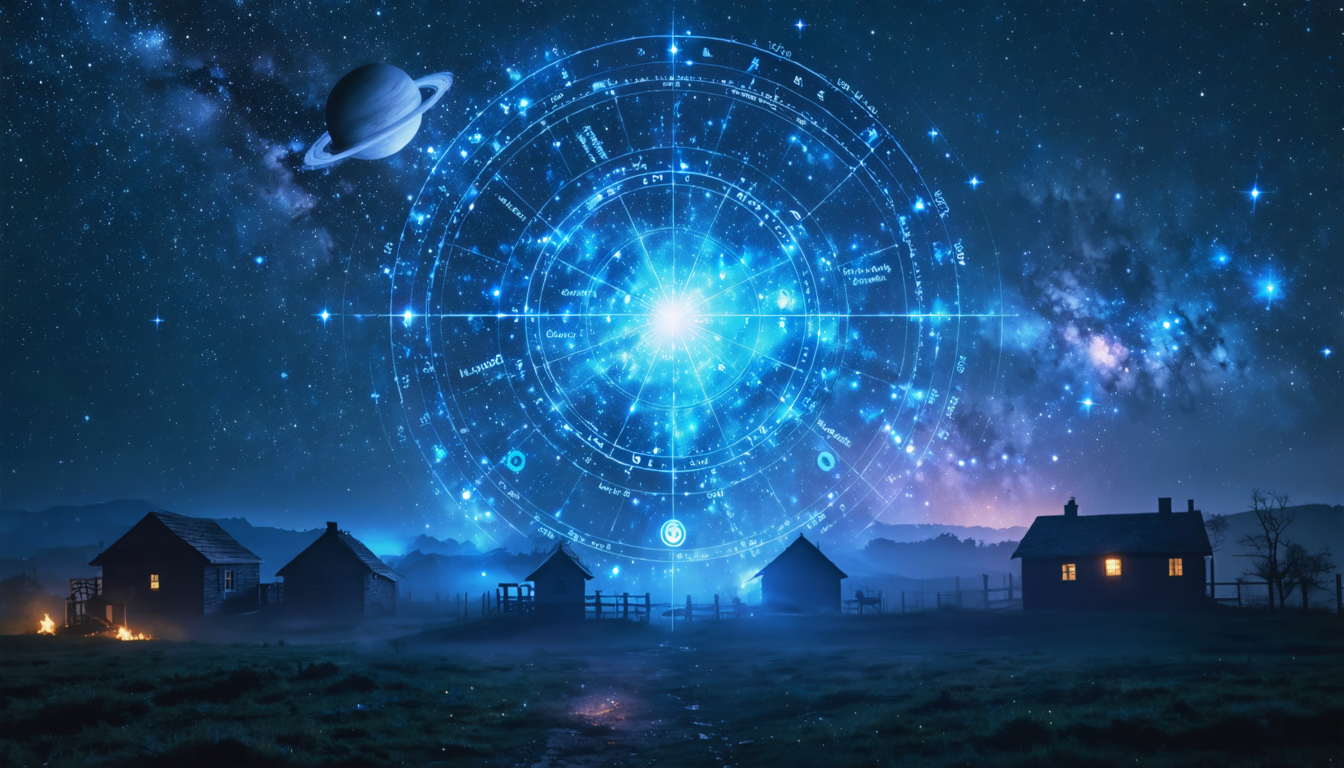A birth chart, also known as a natal chart, is a snapshot of the sky at the moment you were born. It’s a powerful tool used in astrology to understand your unique personality, strengths, weaknesses, and potential life path. Learning to read your birth chart can provide profound insights into yourself and your place in the universe. Let’s embark on this journey of self-discovery, unveiling the celestial map that guides you.
Understanding the Basics Elements, Modalities, and Houses
Before we delve into the specific roles of the celestial bodies within your birth chart, it’s crucial to understand the fundamental structure and energetic qualities that form its foundation. Imagine the birth chart as a map of the sky at the precise moment and location of your birth. This map isn’t just a scattering of points; it’s organized into distinct sectors and imbued with specific types of energy. Understanding these basic components – the Houses, Elements, and Modalities – provides the essential framework for interpreting how the planets operate in your unique cosmic blueprint.
The first crucial structural component is the Houses. These are the twelve divisions of the birth chart wheel, each representing a specific area of life. Think of them as twelve distinct stages or arenas where the drama of your life unfolds. Their numbering begins with the First House, located on the left-hand side of the chart wheel at the Ascendant, and proceeds counter-clockwise. Each house signifies a different aspect of your existence:
Where planets fall within these houses indicates the life areas where their energy is most actively expressed for you.
Next, we have the Elements: Fire, Earth, Air, and Water. These are the fundamental energies that make up the zodiac signs and, by extension, the planets placed in those signs. They describe the basic temperament or quality of energy being expressed.
The balance or imbalance of these elements in your chart indicates your innate energetic disposition and where your energy naturally flows or gets stuck. A prevalence of Fire might suggest someone driven by passion, while a lack of Earth might point to challenges with practicality or grounding.
Finally, the Modalities: Cardinal, Fixed, and Mutable. These describe *how* the elemental energy is expressed – the mode of operation or approach to life. Each element has one sign in each modality.
The dominant modality in a chart shows how someone navigates change, approaches tasks, and sustains energy. A strong Cardinal emphasis suggests a natural leader, while a strong Mutable emphasis indicates adaptability.
When you combine Elements and Modalities, you start to see the texture of personality emerge. For example, a chart with strong Cardinal Fire (like Aries) indicates a passionate, initiating drive – someone eager to start new ventures with fiery enthusiasm. Fixed Earth (like Taurus) points to a practical, stable energy that is resistant to being moved, preferring to build and maintain tangible security. Mutable Air (like Gemini) describes an intellectual energy that is adaptable and communicative, constantly seeking new information and connections. Cardinal Water (like Cancer) shows an emotional energy that initiates connection and nurtures. By understanding these basic components – the arenas of life (Houses), the fundamental energies (Elements), and the modes of expression (Modalities) – you build the foundation upon which to interpret the specific celestial bodies, the planets, and their unique influence in your cosmic blueprint.
The Planets Unveiling the Key Players in Your Chart
The celestial bodies in your birth chart are the actors on the stage defined by the houses and filtered through the lens of the signs. Each planet represents a fundamental psychological function or a core area of human experience. Understanding their individual roles is crucial, but their true expression in your chart comes alive when you consider the sign they occupy (the quality or *how* the energy manifests) and the house they reside in (the area of life *where* that energy is most actively expressed).
At the heart of your chart are the two luminaries: the Sun and the Moon. The Sun symbolizes your core identity, your conscious ego, your purpose, and your vital life force. It represents who you are striving to become and the area of life where you seek to shine and express your individuality. The sign the Sun is in indicates your fundamental way of being, your essential nature and drives. For instance, a Sun in fiery Aries is driven by initiation and action, while a Sun in earthy Taurus values stability and tangible pleasures. The house the Sun occupies highlights the specific arena of life where you are meant to assert your identity and pursue your conscious goals. A Sun in the 10th House of Career and Public Life suggests a strong drive for achievement and recognition, while a Sun in the 4th House of Home and Family indicates that your core identity and purpose are deeply intertwined with your roots and private life.
Complementing the Sun is the Moon, representing your emotional nature, instincts, subconscious reactions, deepest needs, and sense of security. It is your inner world, how you respond intuitively to life, and what you need to feel safe and nurtured. The Moon sign describes your emotional style and how you process feelings. A Moon in watery Cancer finds security through nurturing and connection, needing emotional closeness. A Moon in airy Aquarius seeks emotional freedom and connects through shared ideas or humanitarian concerns. The house the Moon occupies shows where you seek comfort and security, and where your emotional responses are most readily triggered. A Moon in the 7th House of Relationships means your emotional security is closely tied to your partnerships, while a Moon in the 2nd House of Values and Resources might find comfort in material stability or self-worth.
These two placements are often considered the most significant, offering profound insights into your inner and outer worlds. For example, someone with a proud, expressive Leo Sun in the 1st House (Self and Identity) projects a strong, charismatic presence. If this person also has a sensitive, private Pisces Moon in the 8th House (Transformation and Shared Resources), their outward confidence may mask a deep, complex, and somewhat hidden emotional world that is intensely focused on themes of intimacy, change, and subconscious dynamics. Conversely, a person with a practical, grounded Virgo Sun in the 6th House (Work and Service) might dedicate their conscious energy to health and efficiency in their daily routine, while an adventurous, optimistic Sagittarius Moon in the 11th House (Groups and Hopes) reveals an underlying emotional need for exploration, freedom, and connection with like-minded communities. Understanding the interplay between the Sun’s purpose and the Moon’s needs is foundational.
Beyond the luminaries, we have the personal planets: Mercury, Venus, and Mars. Mercury governs communication, thinking, learning, and intellect. Its sign shows *how* you communicate and process information, and its house shows *where* you apply your mental energy. Venus represents love, beauty, values, relationships, and pleasure. Its sign indicates your style of affection and what you find attractive, while its house shows the area where you seek harmony and connection. Mars signifies action, energy, drive, assertion, and passion. Its sign determines *how* you assert yourself and pursue goals, and its house indicates the life area where you direct your energy and confront challenges.
Next are the social planets: Jupiter and Saturn. Jupiter is the planet of expansion, luck, optimism, and wisdom. It shows where you find opportunities for growth and receive blessings (the house) and *how* you pursue these (the sign). Saturn is the planet of structure, discipline, responsibility, challenges, and maturity. It represents the area of life where you face limitations and learn important lessons (the house) and the *manner* in which you approach these responsibilities (the sign).
Finally, the outer or transpersonal planets: Uranus, Neptune, and Pluto. These move slowly and often signify generational themes, but their house placement in your chart shows the specific area of your life where these powerful, often subconscious or collective energies play out. Uranus represents innovation, rebellion, change, and sudden events. Its house indicates where you experience breakthroughs or disruption. Neptune governs dreams, intuition, spirituality, illusion, and compassion. Its house shows where you experience idealism, confusion, or a connection to the transcendent. Pluto signifies transformation, power, death and rebirth, and intensity. Its house marks the area of life where you encounter deep change, power struggles, or profound psychological processes.
By examining each planet in its sign and house context, you begin to see the distinct energies and motivations that shape your unique cosmic blueprint. It’s not just about being an ‘Aries’ Sun, but about how that Aries Sun energy expresses itself in a specific house, interacting with the deep needs shown by your Moon placement, and colored by the activities of your personal, social, and outer planets.
Putting It All Together Aspects and Chart Interpretation
Astrological aspects are the geometric angles formed between planets and other significant points in a birth chart. Think of them as invisible lines connecting the energies of these celestial bodies, indicating how they interact and influence one another. These angles aren’t random; they are based on dividing the 360-degree circle of the zodiac. The angular relationship describes the *dynamic* between the planets involved, showing whether their energies flow smoothly, clash, or create tension that can be harnessed for growth. The most significant aspects, often called the major or Ptolemaic aspects, include the conjunction (0 degrees), sextile (60 degrees), square (90 degrees), trine (120 degrees), and opposition (180 degrees). Other minor aspects exist, but these five are fundamental for initial interpretation.
The *conjunction* brings two planetary energies together, merging them intensely. The planets involved are often in the same sign or close signs, combining their essential natures. This can be a powerful point of focus or overwhelm, depending on the planets. A *sextile* represents an angle of opportunity and ease (60 degrees). It suggests potential and harmonious interaction between the planets involved, making it easier to express their combined energies constructively, often requiring conscious effort. The *square* (90 degrees) is a challenging aspect, indicating tension, conflict, and obstacles. Planets in square create friction, but this friction is a powerful motivator for action, growth, and problem-solving. It forces awareness and change. A *trine* (120 degrees) is the most harmonious aspect, suggesting ease, talent, and natural flow. Energies between planets in trine support each other effortlessly, often highlighting areas of natural ability or luck. However, without conscious effort, these talents might be taken for granted. The *opposition* (180 degrees) places two planets directly across the zodiac from each other, creating a dynamic of polarity and awareness. It often represents a push-and-pull, internal conflict, or relationships where these opposing energies are played out. It requires balance and integration.
Identifying these aspects in your chart involves looking for the lines connecting planets on the chart wheel or examining an aspect grid, which lists all the significant angles. The tightness of the aspect, measured by the ‘orb’ (how many degrees away from the exact angle the planets are), determines its strength. A smaller orb indicates a more potent connection. Interpreting an aspect means understanding *which* planets are connected, *what* signs they are in, and *what* houses they occupy, then describing how those energies interact according to the aspect’s nature. For example, Mars (action, drive) square Saturn (structure, limitation) creates friction between your drive and your ability to execute it, potentially leading to frustration or disciplined effort. Venus (love, values) trine Jupiter (expansion, luck) suggests ease and good fortune in relationships or finances.
Synthesizing all this information – the planets (what), in signs (how), in houses (where), connected by aspects (how they interact) – is the core of chart interpretation. It’s about seeing the birth chart as a complex, interconnected ecosystem, not just a collection of isolated points. To begin putting it all together, first identify the *Chart Ruler*. This is the planet that rules the sign on your Ascendant (Rising Sign). This planet is often considered your co-ruler alongside the Sun and Moon, holding significant weight in describing your personality and how you present yourself to the world. Pay close attention to its sign, house, and aspects – they heavily influence your core identity.
Next, look for other prominent features: stelliums (three or more planets in the same sign or house, indicating a concentrated energy), planets conjunct angles (AC, DC, MC, IC), and the most numerous or tightest aspects. These areas highlight major themes and energies in your life. A step-by-step approach involves:
1. Locate the Ascendant and identify its ruling planet (the Chart Ruler). Analyze its placement and aspects.
2. Examine the Sun and Moon placements (sign, house, aspects) as core indicators of identity and emotion.
3. Review planets conjunct the Midheaven (career/public life focus).
4. Identify any stelliums and analyze the combined energy.
5. List the major aspects, noting the planets, signs, and houses involved. Prioritize tightest orbs and major configurations (like T-squares or Grand Trines).
6. Begin weaving interpretations together. Start with the core (Sun, Moon, Ascendant ruler), then layer in the house and sign meanings. Finally, integrate the aspects, describing how these core energies interact and influence the themes of the houses they occupy. For example, a Sun in the 10th house (career focus) square Mars in the 1st house (assertive drive) suggests your drive for recognition (Sun in 10th) might manifest aggressively or impulsively (Mars in 1st), creating challenges in public life or career (square). The interpretation is a narrative, describing the dance between these cosmic energies. It’s through understanding these connections that the full story of your cosmic blueprint begins to unfold.
Conclusions
Reading a birth chart is a journey of self-discovery that unveils the intricate tapestry of your personality and potential. By understanding the elements, modalities, houses, planets, and aspects, you can decipher the celestial language that shapes your life. Remember that a birth chart is not a fixed destiny, but a map of possibilities. Embrace the insights it offers to navigate your path with greater awareness and purpose, allowing you to become the most authentic version of yourself.


